

Part of classroom management this fall might look a little different than every other year. Normally, you hang up your alphabet chart. Set up your word wall. Plan out seating arrangements that build a positive classroom community. This year, you might find yourself needing to help families set up a learning space at home for distance learning.
By sharing tips and ideas with parents, you will help your students be more successful in distance learning. Parents may have taken the time over the summer to prepare a learning space at home for distance learning, or they might feel incapable and overwhelmed. Sharing ideas for preparing a learning space for distance learning at home will need to come from a place of humility and with grace.
After some experimenting with my own children with distance learning, I put together some tips for you to share with the parents of your students to make distance learning more efficient and effective.
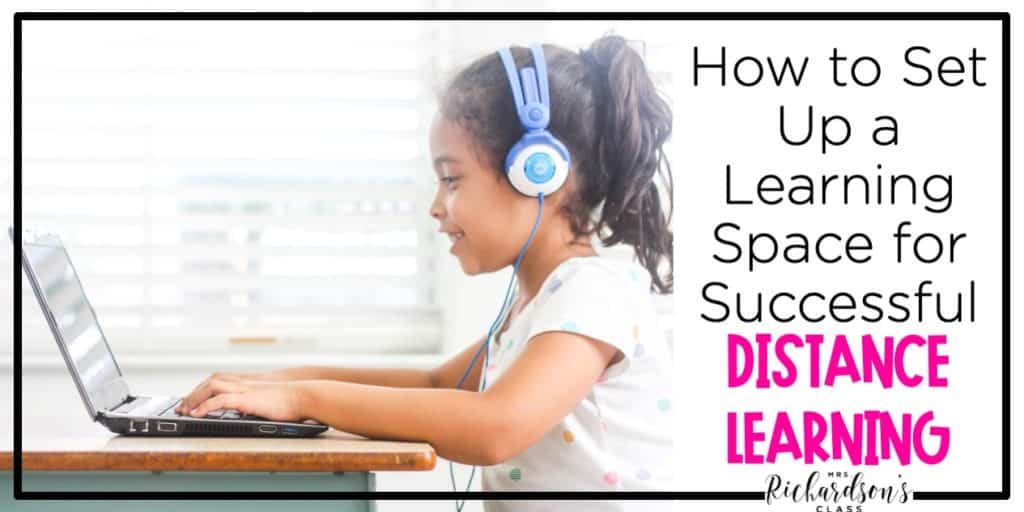
Encourage students to use the restroom before a live instruction time starts. If you have a welcome screen in the virtual class waiting room, you could display this reminder while students wait for class to start. Because these live class times are not very long, even a five-minute break could result in missing critical information.
Young children can be difficult to understand while in the virtual classroom sometimes. If they are munching on snacks, it could be even more difficult. Try not to schedule live class times during typical breakfast or lunchtimes. Then, ask parents and students to avoid snacking during live meetings.
With this request will also need to come to the understanding that sometimes that can’t be avoided. Kids, especially primary grade children, sometimes just get super hungry. They may not have a consistent schedule, too. So ask for them to eat beforehand, but be understanding if they can’t.
Ask parents to let their students keep a spill-proof cup near their work area. We can encourage parents to reduce the number of reasons students would need to get up from the lesson by keeping water next to their work area.
Share the distance learning tools students will need and offer alternatives to parents. For example, if you can’t get dry erase boards in their hands or they can’t purchase them, students can use scratch paper and a dark crayon or marker.
Next, share some ideas on how materials can be stored together so students don’t have to spend a lot of time running around, trying to find everything. This could be anything from a plastic caddy to a shoebox. Any container will work!
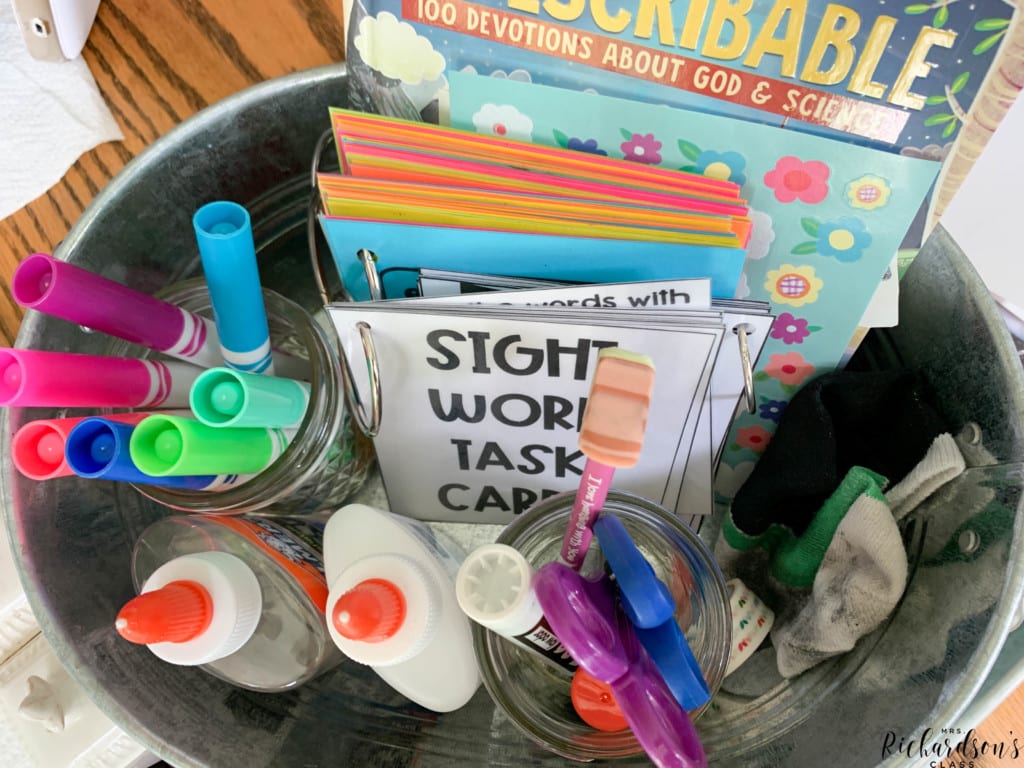
Encourage families to create a morning routine similar to their normal school morning routine. This would include getting up around the same time, eating breakfast, and getting dressed for the day. We want students to feel ready for school. When we feel our best, we perform our best!
Each day before a live lesson begins, ask parents to help their students do an audio and visual test. If technology issues can be handled before class time starts, you’ll have more time to teach and kids who are less frustrated. One important piece of information to provide parents is what to do if there are ongoing tech issues. Make sure they know what to do if they need help and who to contact.
Remind parents that they don’t have to renovate an entire room in a home for students to experience success in distance learning. A learning space for distance learning just needs to be relatively quiet and distraction-free. It could be a quiet hallway, on the floor with a lap desk, the kitchen table, a desk, etc. It doesn’t have to be a dedicated home office for successful distance learning.
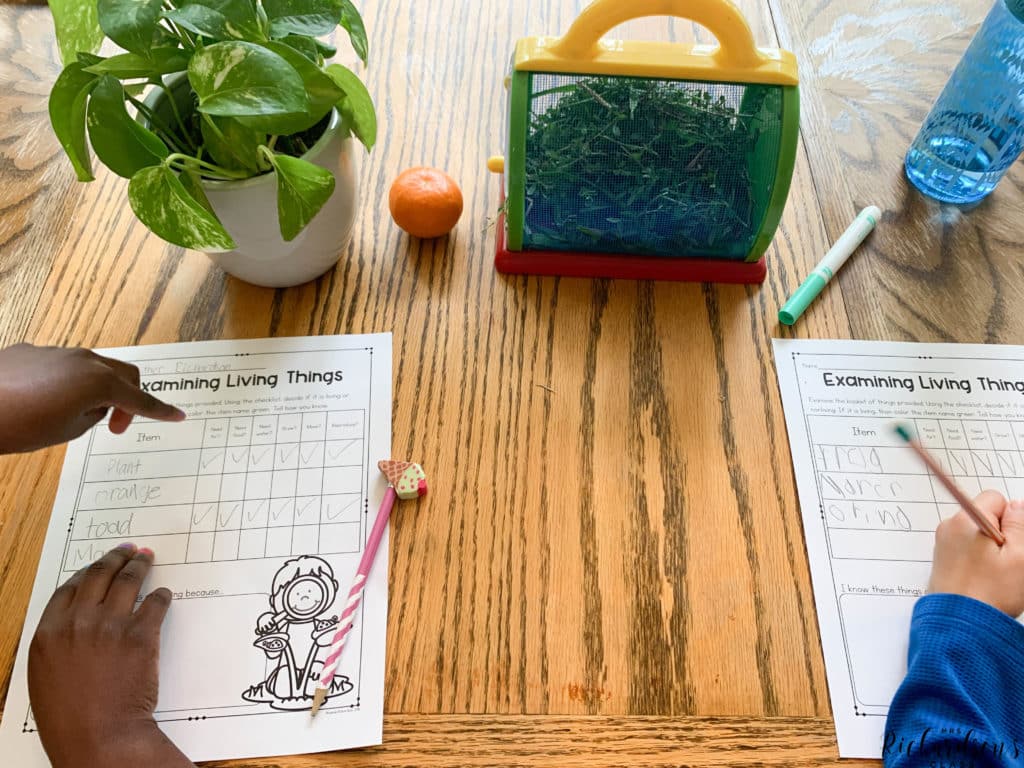
It will be important to keep in mind that every student learning at home this year will face unique challenges. We cannot expect each child’s learning space for distance learning to be equal or the same or perfect.
Everyone’s home and family situations are as unique and diverse as our students. Students may have a dedicated parent home to help them, or they may be helping assist with younger siblings during the day. No matter the situation, we can equip parents with a large variety of tips and ideas when they ask.
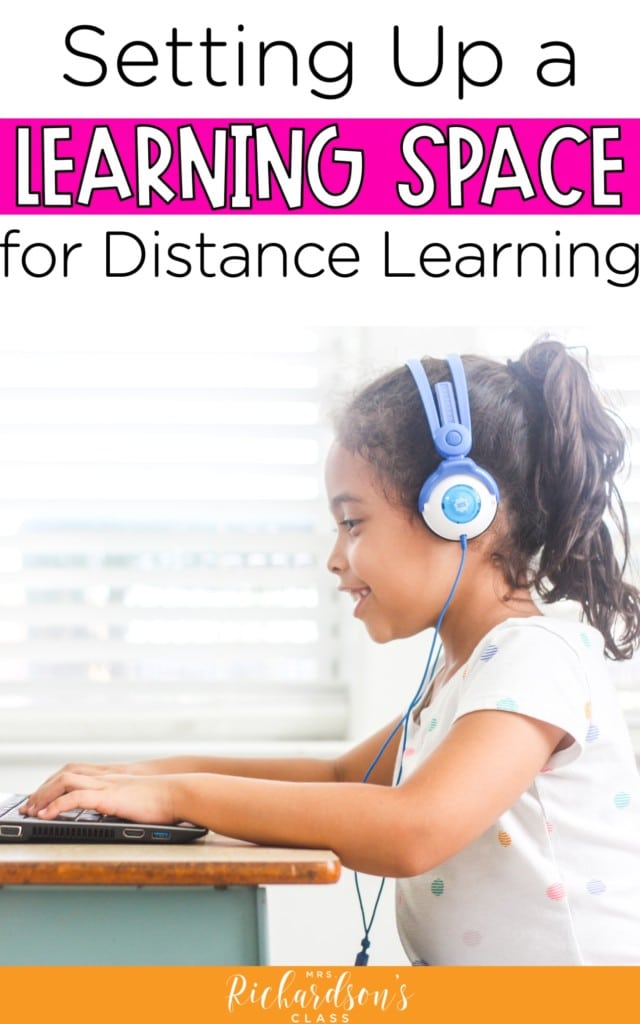
pin it
If you have any other tips and ideas to help parents set up a learning space at home, head to my Facebook group and share! I’d love to hear from you!
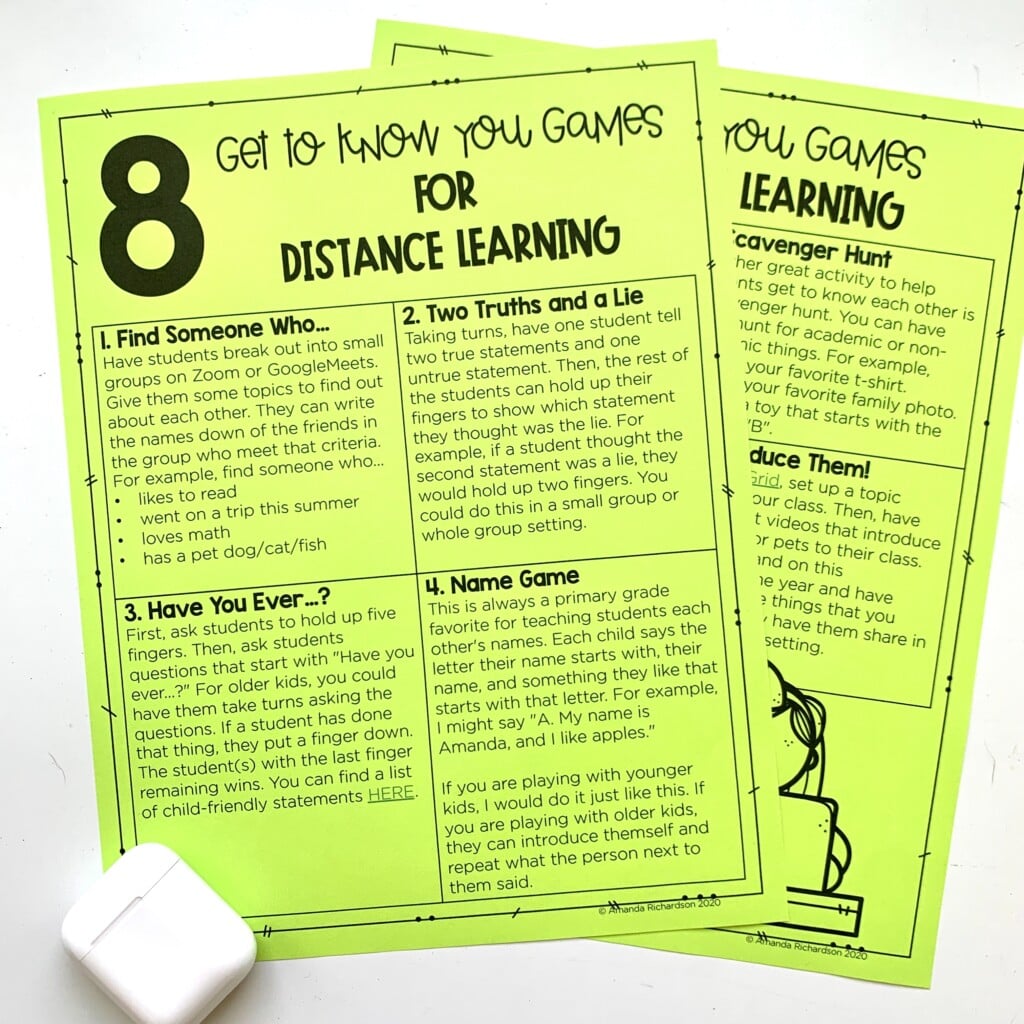

I’m a K-1 teacher who is passionate about making lessons your students love and that are easy to implement for teachers. Helping teachers like you navigate their way through their literacy block brings me great joy. I am a lifelong learner who loves staying on top of current literacy learning and practices. Here, you’ll find the tools you need to move your K-2 students forward!


| Cookie | Duration | Description |
|---|---|---|
| cookielawinfo-checkbox-analytics | 11 months | This cookie is set by GDPR Cookie Consent plugin. The cookie is used to store the user consent for the cookies in the category "Analytics". |
| cookielawinfo-checkbox-functional | 11 months | The cookie is set by GDPR cookie consent to record the user consent for the cookies in the category "Functional". |
| cookielawinfo-checkbox-necessary | 11 months | This cookie is set by GDPR Cookie Consent plugin. The cookies is used to store the user consent for the cookies in the category "Necessary". |
| cookielawinfo-checkbox-others | 11 months | This cookie is set by GDPR Cookie Consent plugin. The cookie is used to store the user consent for the cookies in the category "Other. |
| cookielawinfo-checkbox-performance | 11 months | This cookie is set by GDPR Cookie Consent plugin. The cookie is used to store the user consent for the cookies in the category "Performance". |
| viewed_cookie_policy | 11 months | The cookie is set by the GDPR Cookie Consent plugin and is used to store whether or not user has consented to the use of cookies. It does not store any personal data. |


